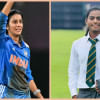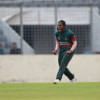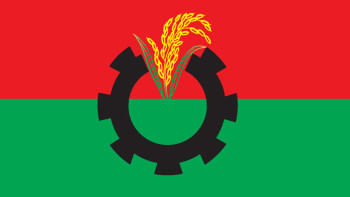How women awakened cricket's sleeping beauty

I used to think I had seen cricket in all its glory, from the elegance of perfect cover drives to the violence of toe-crushing yorkers. I grew up watching the men's game beside my father, dissecting every over like a family ritual. Then, somewhere between another shiny league and another scripted series, I realised the game had lost its raw pulse.
But I found it again in women's cricket.
There is something profoundly human about how the women play. Continuing the trend in the ongoing ICC World Cup, there is intent on every ball as they fight for space, for respect, for the right to be seen as the main event -- a right they first claimed half a century ago when the inaugural Women's World Cup in 1973 predated the men's by two years. That determination is evident in Bangladesh's dressing room.
Nigar Sultana Joty is captain cool personified, operating with clarity and wisdom, keeping the under-supported group steady. One particular incident of late, however insignificant it may have seemed, exemplified a refreshing, humane side after a Bangladesh player misfielded in the outfield and took a moment too long to throw. However, instead of venting out, Joty was heard offering calm, positive reinforcement, showcasing rare leadership skills grounded in empathy rather than ego.
There are characters, personalities within the women's circuit, who don't appear as factory products. In this regard, the spotlight is easily shared by a certain dynamite that is Marufa Akter.
The Bangladesh fast bowler runs in with indomitable rhythm and fearless eyes, her vicious inswing modelled on Mitchell Starc. Beyond the boundary, Marufa choosing the World Cup platform to speak about the discrimination she faced growing up in poverty says as much about the courage that shapes this generation as her bowling does about her craft.
This shift is not only about Bangladesh. Across the world, the women's game is roaring into its own as contracts, sponsorships and coverage have begun to reflect the calibre of the athletes rather than their gender.
Alyssa Healy, Australia's swashbuckling opener, captain and wicketkeeper all rolled into one, remains the standard-bearer at the top -- aggressive and clinical, much like her husband Starc.
Meanwhile, Smriti Mandhana, the first Indian woman to score a century in all formats, brings timing and grace that belong to every era. When she leans into a drive, you remember why cricket is a craft before it is a product. Smriti had, in fact, surpassed Virat Kohli to become the fastest Indian to tally 5,000 ODI runs.
From England, Heather Knight, who constructs innings with intelligence instead of brute force, embodies the quiet resolve that defines her side. For South Africa, veteran Laura Wolvaardt's poise at the top, Nadine de Klerk's all-round vigour, and the way they chased down targets against India and Bangladesh in this World Cup have offered the old-school essence of the game -- the best of both formats, Tests and limited-overs.
These are not mirrors of the men's game. The pattern differs: partnerships are built, not blasted, and more shots are played according to merit, not premeditated; the celebrations are unfiltered but with less swagger and bare-minimal hostility.
With a hunger to feel the rawness of cricket again, instead of just consuming a match, it's in the women's game that I found the essentials that first hooked me as a child: craft, courage and consequence.
At home, we still talk cricket around the table. My father and I break down angles and options. My mother brings the stories and the memory of older greats. Now, though, I find myself steering the conversation towards women's fixtures; for which the energy feels lighter and the stakes feel truer.
And with every landmark, from a record chase to an ever-increasing viewership, the women's game continues to prove that it isn't a supplement to cricket's story but the soul that's been rediscovered within it.
I used to think I loved the game for its heroes. I know now I love it more for its heroines.

 For all latest news, follow The Daily Star's Google News channel.
For all latest news, follow The Daily Star's Google News channel. 









Comments